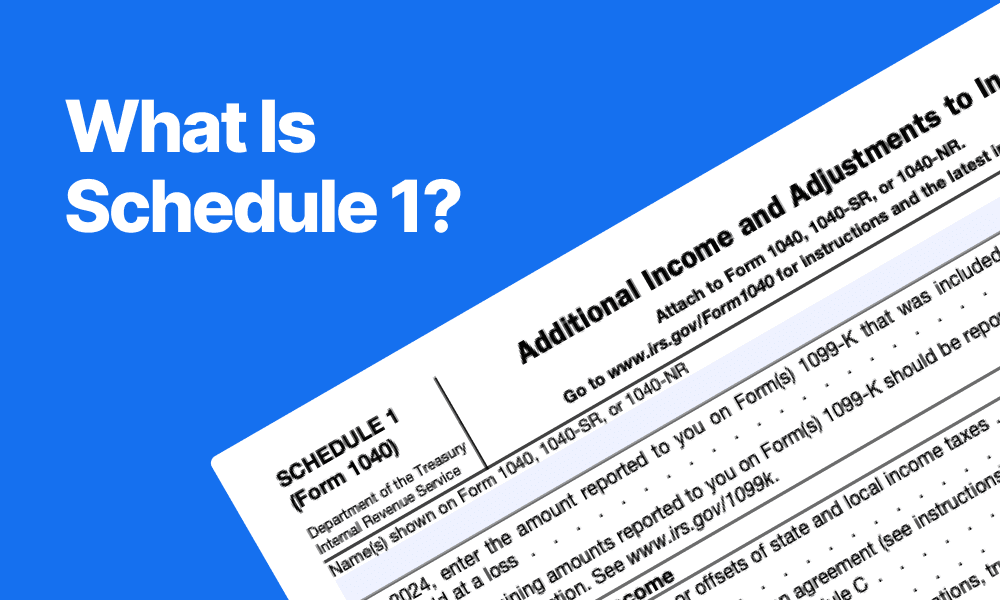What Is IRS Schedule 1 (Form 1040)? Additional Income and Adjustments Explained

IRS Schedule 1 (Form 1040): What It Is, Who Needs It, and Why It Matters
Filing your taxes accurately means more than just submitting Form 1040. If you have certain types of income or claim specific deductions, you’ll likely need to attach Schedule 1 to your tax return.
In this guide, TAXtical LLC breaks down what Schedule 1 (Form 1040) is, who should file it, and how it impacts your total taxable income.
What Is Schedule 1 (Form 1040)?
Schedule 1 is an IRS form used to report types of income and adjustments to income that aren’t included directly on the main Form 1040.
It’s divided into two parts:
Part I – Additional Income
Part II – Adjustments to Income
If you have any entries on this schedule, the totals will flow into Form 1040, affecting your Adjusted Gross Income (AGI).
Who Should File Schedule 1?
You must file Schedule 1 if you have additional income or eligible adjustments, such as:
Common Types of Additional Income (Part I):
Taxable refunds or credits from state/local income taxes
Alimony received (for divorces finalized before 2019)
Business income (from Schedule C)
Capital gains/losses (from Schedule D)
Rental real estate, royalties, or pass-through income (Schedule E)
Farm income (Schedule F)
Unemployment compensation
Gambling winnings
Jury duty pay
Scholarships and fellowship grants not reported on W-2
Common Income Adjustments (Part II):
Student loan interest deduction
Educator expenses (up to $300 for teachers)
Self-employment tax deduction
IRA contributions
HSA contributions (Form 8889)
Moving expenses for active-duty military
Alimony paid (if divorce finalized before 2019)
Why Is Schedule 1 Important?
1. Full Disclosure of Taxable Income
It ensures the IRS receives a complete picture of your financial activity beyond wages or salaries.
2. Claim Valuable Deductions
Schedule 1 helps reduce your Adjusted Gross Income, which in turn lowers your taxable income and possibly your tax bracket.
3. Avoid IRS Penalties
Omitting income such as unemployment benefits or freelance work may trigger IRS notices or audits. Filing Schedule 1 helps you stay compliant.
How to File Schedule 1
Here’s how Schedule 1 fits into your tax return:
Complete Schedule 1 using income and adjustment records.
Attach it to Form 1040 when filing.
Use other schedules if needed, such as:
Schedule C (self-employed income)
Schedule E (rental income)
Schedule SE (self-employment tax)
❗ Common Mistakes to Avoid
Forgetting to report unemployment or gambling winnings
Overlooking eligible deductions (e.g., HSA or IRA contributions)
Filing Schedule 1 without attaching related forms (e.g., Schedule C, 8889)
Misreporting alimony due to post-2018 law changes
💼 How TAXtical Can Help
Schedule 1 involves more than just filling out boxes. Our team at TAXtical LLC helps individuals, freelancers, and small business owners file accurate and complete returns, including all necessary schedules.
With our help, you can:
✅ Identify which parts of Schedule 1 apply
✅ Maximize legal deductions
✅ Avoid common filing errors
✅ Stay compliant with IRS rules
Whether you receive self-employment income or student loan deductions, we’ll ensure Schedule 1 is correctly completed and attached.
📞 Ready to File Accurately with Confidence?
Don't let missing forms or unreported income slow down your tax return. Let TAXtical handle the complexities of Schedule 1 and all associated schedules.
👉 Contact us today for a free consultation and let our tax professionals simplify your filing process!

